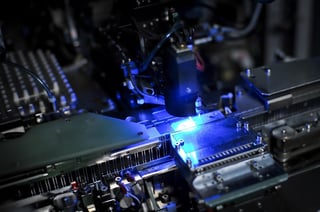 If you are working in the semiconductor industry, you will often hear the ‘SEMI safety guidelines’ mentioned as the basic requirement in the industry.
If you are working in the semiconductor industry, you will often hear the ‘SEMI safety guidelines’ mentioned as the basic requirement in the industry.
SEMI safety guidelines are issued by an industry association with the same name: SEMI (Semiconductor Equipment and Materials International), which is the central global network of manufacturers of micro- and nano-electronics industries. These safety guidelines were developed to improve product quality and reliability at a reasonable price and steady supply.

There are numerous SEMI standards covering different areas such as: chemical hazard, device tracking, human-machine interface, sensor actuator network; but among them, SEMI S2 is the most well-known standard in semiconductor manufacturing equipment for Environmental, Health, and Safety (EHS).
For a quick overview, the SEMI S2 covers some of the following topics in the assessment of a semiconductor manufacturing machine:
- Hazard Alert Labels (in relation to SEMI S1)
- Safety Interlock Systems
- Emergency Shutdown
- Electrical Design
- Fire Protection
- Process Liquid Heating Systems (in relation to SEMI S3)
- Ergonomics and Human Factors (in relation to SEMI S8)
- Hazardous Energy Isolation
- Lasers
In the last SEMICON Southeast Asia 2017, the most prestigious trade show for the semiconductor industry, our expert Loh King Yew was invited to give a presentation on how SEMI S2/S8 can make the semiconductor manufacturing safer, and the improvements on SEMI S2 over the years.
![]()
Some of the recent changes from SEMI S2 0715 to SEMI S2 1016b include the following:
- Segregation in Fire Risk Reduction (clause 14.4) into two separated clauses, namely ‘Fire Risk Reduction (Other than Detection and Suppression)’ and ‘Fire Detection and Suppression System’.
- Relocation of clause 14.4.3.4 to 14.5.1.12: Shutdown or failure of a fire detection or suppression system need not interrupt the processing of product within the equipment by immediately shutting down the system. This relocation is intended to place the clause a more appropriate section of the guideline.
- Removal of ‘Controlling smoke by exhausting’ (clause 14.4.3.5). Therefore, controlling smoke of exhausting of smoke is no longer permitted. In the event of a smoke, controlling of smoke should only be done with the use of a fire suppressant.
- Removal of example in ‘Fire risks resulting from materials of construction’ (clause 14.4.3.2) in which fire risks may be reduced using engineering controls.
More informationand services about semiconductor manufacturing
- Get an update on future workshops or industry news by registering to our mailing list.
- Find out how we can help on SEMI S2 and S8 certification on our service webpage.
- Need help on Semiconductor Machinery? Ask TÜV Rheinland.
- Download the technical presentation on SEMI S2 in SEMICON Southeast Asia 2017 here.



